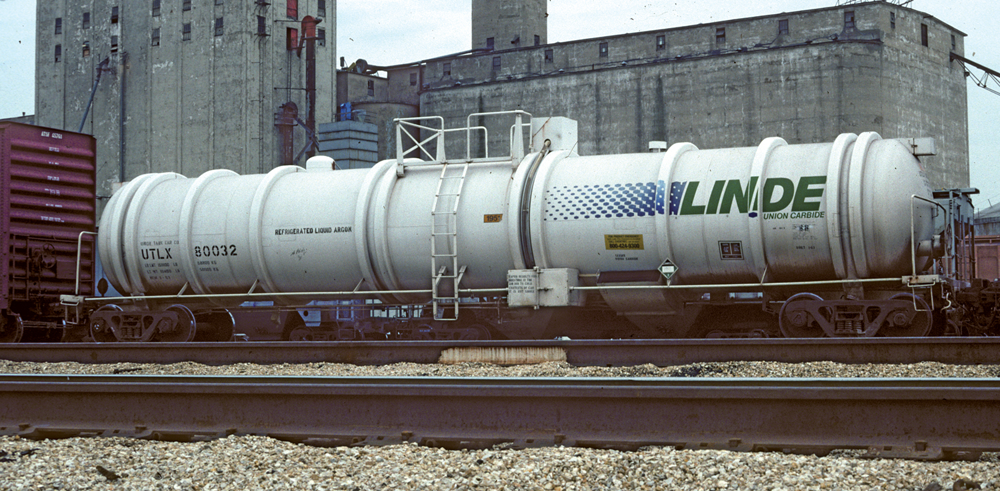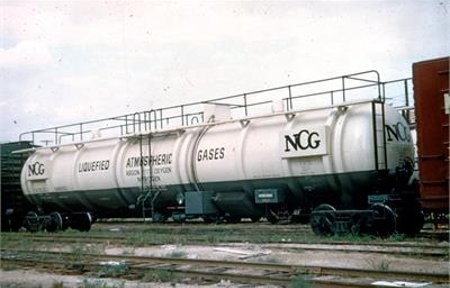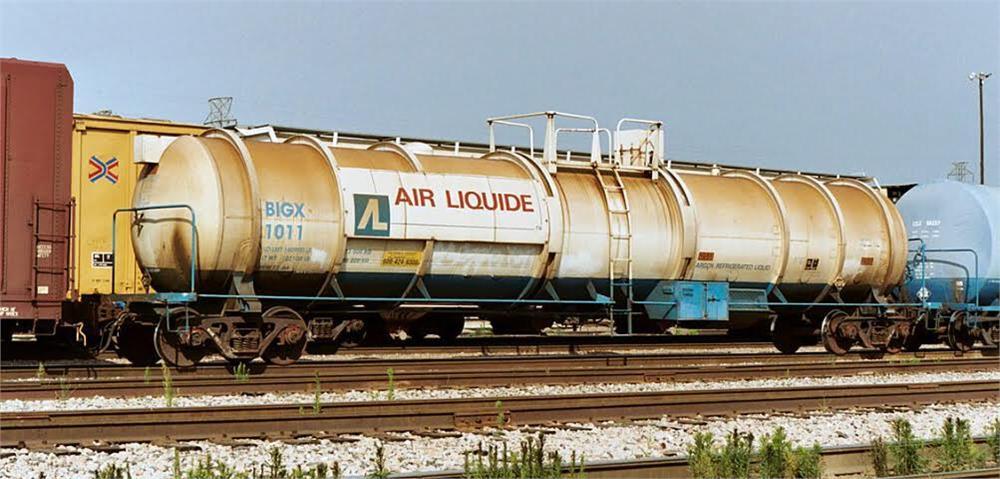History: High Capacity Railroad Tank Cars for Cryogenic Fluids, or Cryogenic Tank Cars for short, are used for the transportation of super-cold fluids such as liquid oxygen, nitrogen and argon. These tank cars solved the problem of maintaining extremely low temperatures while transporting large quantities of these materials over long distances.
These high capacity tank cars could transport more than 15,000 gallons of liquid oxygen--which is about double what any of its predecessors could do.
Cryogenic Tank Car Designations: DOT 113; AAR 204 and 204XT.
Cryogenic railroad tank cars are usually constructed of nickel or stainless steel as a tank within a tank. Because cryogenic liquids are very cold, insulation is placed between the two tanks and a vacuum pulled on the space to maintain the temperature. This process will allow the tank car a 30-day holding time.
Cryogenic cars transport various gases, including flammable hydrogen, liquid oxygen and poisons. Some cryogenic gases, such as nitrogen and argon, are considered inert. Temperatures of these liquefied gases can range from the warmest, carbon dioxide at –130°F, liquid oxygen at -297°F, liquid argon at -302°F, liquid nitrogen at -320°F, to the coldest, helium at –452°F. Thermal hazards of these materials are significant.
In addition to thermal hazards, cryogenic liquids have a large liquid-to-vapor expansion ratio. A small leak from a valve or container can create a large vapor cloud. Some ratios are as great as 900 to 1, meaning one gallon of cryogenic liquid can produce over 900 gallons of gas.
From Broadway Limited International and Firehouse
These high capacity tank cars could transport more than 15,000 gallons of liquid oxygen--which is about double what any of its predecessors could do.
Cryogenic Tank Car Designations: DOT 113; AAR 204 and 204XT.
Cryogenic railroad tank cars are usually constructed of nickel or stainless steel as a tank within a tank. Because cryogenic liquids are very cold, insulation is placed between the two tanks and a vacuum pulled on the space to maintain the temperature. This process will allow the tank car a 30-day holding time.
Cryogenic cars transport various gases, including flammable hydrogen, liquid oxygen and poisons. Some cryogenic gases, such as nitrogen and argon, are considered inert. Temperatures of these liquefied gases can range from the warmest, carbon dioxide at –130°F, liquid oxygen at -297°F, liquid argon at -302°F, liquid nitrogen at -320°F, to the coldest, helium at –452°F. Thermal hazards of these materials are significant.
In addition to thermal hazards, cryogenic liquids have a large liquid-to-vapor expansion ratio. A small leak from a valve or container can create a large vapor cloud. Some ratios are as great as 900 to 1, meaning one gallon of cryogenic liquid can produce over 900 gallons of gas.
From Broadway Limited International and Firehouse
Railroad/Company: This set of items is comprised of more than one name. Please look at the component items for details on the specific roadnames and/or manufacturers.
Item Links: We found: 1 different collections associated with Rail - Rolling Stock (Freight) - Cryogenic
- Collection N Scale Model Trains: 56 different items.
Item created by: Alain LM on 2018-11-18 02:42:35. Last edited by Alain LM on 2018-11-18 02:59:45
If you see errors or missing data in this entry, please feel free to log in and edit it. Anyone with a Gmail account can log in instantly.
If you see errors or missing data in this entry, please feel free to log in and edit it. Anyone with a Gmail account can log in instantly.










